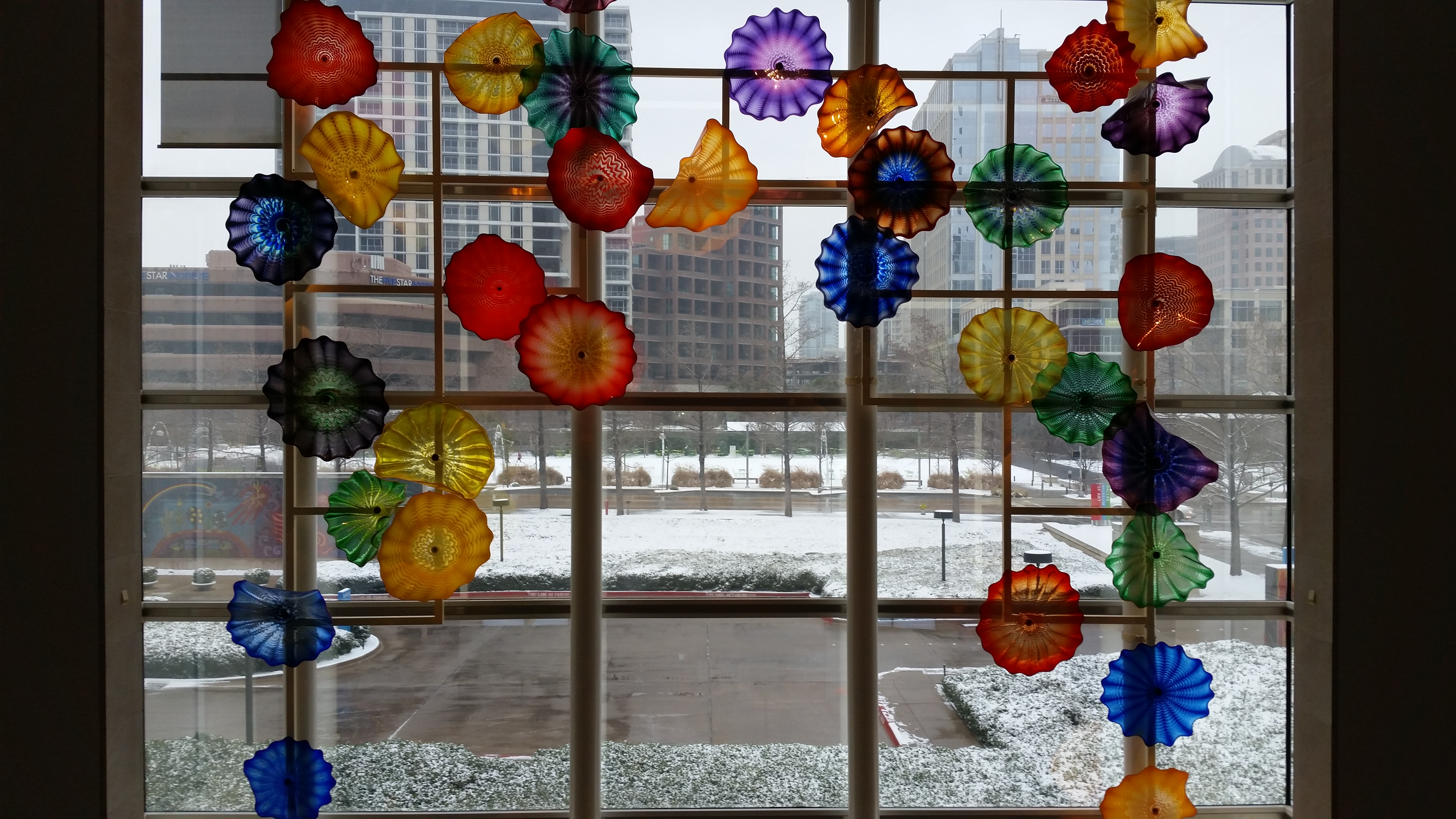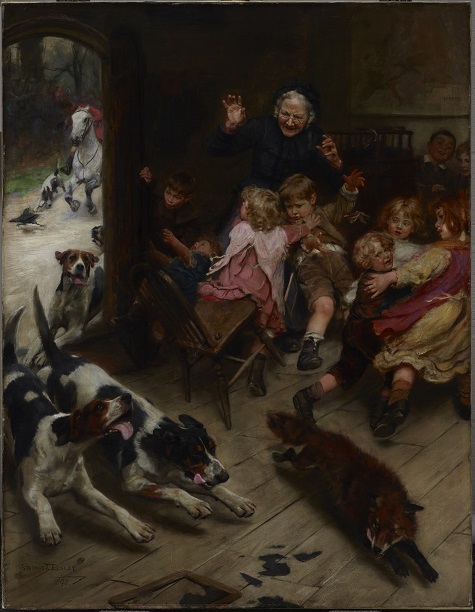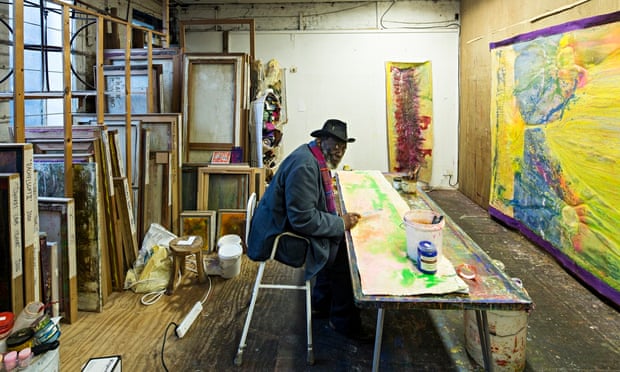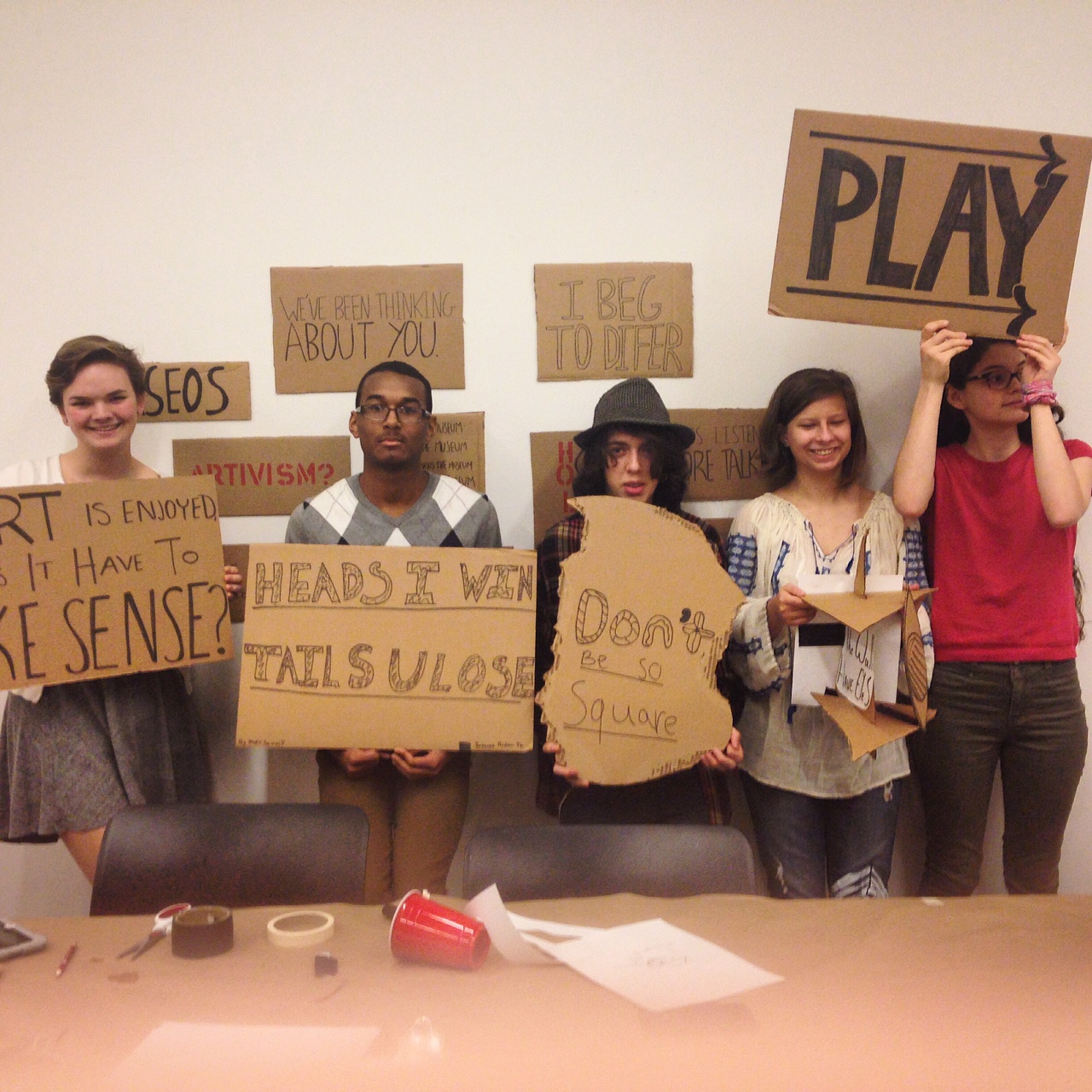Winter has blanketed us here in Dallas today, providing quite a picturesque setting for our art.



Enjoy our Texas snow and stay warm out there!
Sarah Coffey
Education Coordinator
Official behind-the-scenes blog of the Dallas Museum of Art
Winter has blanketed us here in Dallas today, providing quite a picturesque setting for our art.



Enjoy our Texas snow and stay warm out there!
Sarah Coffey
Education Coordinator
In our Center for Creative Connections, we provide opportunities for visitors to respond to works of art through discussion, drawing, making, and writing.
Due to its history of multiple names, Arthur John Elsley’s Hard Pressed (Late for School/Any Port in a Storm) provides us with an opportunity to ask visitors to rename the painting.

Arthur John Elsley, Hard Pressed (Any Port in a Storm/Late for School), 1898, oil on canvas, Dallas Museum of Art, gift of Kim Jordan
When reading through the responses, we were surprised by how many were pop culture references. Check out some of our favorites.
Next time you are in the Center for Creative Connections, add your contribution to the wall and maybe you will see it on Uncrated!
Jessica Fuentes is the Center for Creative Connections Gallery Coordinator at the DMA.
Because we offer free general admission, visitors often pop in for a few minutes when they are in the Dallas Arts District. Our Visitor Services team is frequently asked this question: “What would you recommend seeing if you only had thirty minutes to visit the Museum?” We thought it would be fun to pose this tough question to DMA staffers from different departments to see what they consider to be among the highlights. First up is Eric Zeidler, our Publications Manager:
If a visitor had thirty minutes and accepted me as a guide, I would take them to many galleries to highlight multiple works in the collection, starting with the African galleries on Level 3.
Going down the other side of the European galleries, I would point out the nice little Still-life with Fruit by Emilie Preyer; Sir Joshua Reynolds’ commanding Portrait of Miss Mary Pelham (she has such a penetrating stare, which for me suggests a certain formidable willfulness); the gorgeous still-life Basket of Flowers by Beert the Elder, with its petals lying strewn on a tabletop; and my beloved College of Animals by Cornelis Saftleven. I think this work, beyond its allegorical subtleties and its charm for all those who love animals, is a beautifully painted canvas, and I love studying its various striking details.
Follow Uncrated to catch the next DMA Dash and more behind-the-scenes scoops. Visit our collection online anytime here.
Reagan Duplisea is the Associate Registrar, Exhibitions at the DMA.
A quick quiz for you, our dear readers:
Do you love to…
a) talk to people of all ages and sizes
b) spend time in a creative and art-filled environment
c) give back to the community
d) all of the above
If your answer is d) all of the above, then you are the perfect candidate for the C3 Volunteer Program! C3 Volunteers work with visitors of all ages, from 0-99, in the Center for Creative Connections (C3). Every day is different: one day, you might chat with a retired couple about a European painting on view; another day, you might help a five year old and his mother create something out of fun materials at the Art Spot; and yet another day, you might give a high school student a hint on a scavenger hunt she is completing as a class assignment.
No prior expertise in education, art, or art-making is necessary–just a desire to welcome and help visitors as they explore the Center for Creative Connections and the DMA. Volunteers also help us keep our fun activities and interactive spaces clean and organized, as well as prepare materials for studio and gallery programs.
If you are interested, please email us to request a volunteer application. Applications are due March 22, 2015. Mandatory volunteer orientation takes place Saturday, April 4 from 9:30 a.m. – 12:30 p.m. Volunteers must be 16 years of age or older, and able to commit to a year of volunteering.
We hope to hear from you soon!
Melissa Gonzales
C3 Gallery Manager
Tonight we’re opening three exhibitions including one featuring paintings by Frank Bowling. Bowling is a Guyanese-born British artist and is widely celebrated for his contributions to the field of abstraction and his advocacy of black artists internationally. Frank Bowling: Map Paintings highlights work Bowling created in the 1970s while living in New York. Discover more about this artist, who at 80 years old is still active in his London studio, in this fantastic look at his life in The Guardian. See his work tonight for free during Late Night.

Artist Frank Bowling in his studio in South London. Photograph: David Levene. Web source: http://www.theguardian.com/
From ancient Asian scrolls to Islamic lamps and Egyptian hieroglyphs–text has appeared in art for centuries. Fast forward to our contemporary world, where text, serving as a mode of communication, is also part of our visual culture. Artists cleverly use text in a variety of ways, sometimes bold and direct, other times subtle.
In the Center for Creative Connections (C3), February through May is all about TEXT. Here are two ways you can participate at the Museum or at home:
1. Visit the C3 Art Spot to explore text through hands-on art making. Fold, cut, and manipulate magazines and newspapers to create your own text-based sculptures.
2. Have your photos featured on the monitor wall in C3 by submitting your text-themed photographs to our Flickr Group, DMA Textual Awareness.
Jessica Fuentes
C3 Gallery Coordinator
The word public is defined as an adjective: it is used to attribute a quality to someone or something, usually modifying and describing a noun. But what happens when public becomes a verb–an action, a state, the main part of a sentence? Public suddenly stops being passive and becomes active–an occurrence, a happening, an event…
But what makes a museum public? What are its responsibilities? How do we build democratic space/vision? Is it possible or necessary? And if it’s true that we’re losing publicness, how do we reclaim it back?
These are some of the questions I hope to explore with my new work, Experiments on Public Space (EPS). EPS came about thanks to the opportunity to carry out an independent project as part of my McDermott Internship at the Dallas Museum of Art. My background in both research and artistic practice is focused in an interest to understand, explore and expand the ways audiences interact/participate with contemporary art. This project is an extension of that line of inquiry specifically looking at institutional contexts.
I’m fascinated by the language used in museums when referring to issues around publicness, because what do we actually mean when we refer ourselves as a “public museum”? What does it entail? How does a public museum feel or look? What do our visitors understand by “public”? Are they not the public themselves? And why probe publicness? Why now? Why here?
Coming from England, I was very curious about the differences between public cultural institutions here in America and those back in Europe. I think the dialogue is particularly of relevance to the DMA because of its historical founding as a public museum and it’s recently reestablished free general admission, something that is rare in this country. I’m also intrigued by the context of the Museum in a city as diverse as Dallas. Considering the city’s large latino population, I want to explore the standings of the institution in serving a wide range of communities.
The project itself is built on a series of practice-based evaluation methods that take place in the Museum. The public will provide the data with their participation in performances, interventions, seminars and workshops, aiming to collaboratively measure the publicness of the environment in which the institution acts. With this approach I hope to implement active research into the life of the Museum, collecting both inside and outside voices as a way of opening up dialogue. In this sense, the project uses unconventional evaluation methodologies to promote opportunities for reflection, thought, participation and active discussion. The goal is that through these programs, we might collectively exemplify and animate publicness and what it means in the context of museums in the 21st century.

Members of the DMA/Perot Teen Council during a production session for “Alternative Signage”, one of the EPS programs happening during March Late Night.
Confused? Challenged? Excited? – This is a very brief introduction to a project that has almost taken a life of its own. Publicness is a complex issue that touches upon many different fields and it is easy for it to be overlooked or even forgotten. With EPS I hope to bring it back to the fore in an attempt to reclaim its importance. I believe there is a big difference between possessing a quality and being one, and it is crucial that we understand the difference. To claim ‘publicness’ requires more than a certain kind of perception or view; it demands responsibility and action.
Program scheduling will be published on the DMA website, under Center for Creative Connections – Community Projects. I hope you’ll join me in this experiment!
Eliel Jones
McDermott Intern for Visitor Engagement
And so should you!
We’re excited to announce that the DMA’s Go van Gogh outreach program is going to be the recipient of one of Whole Foods 1% Community Giving Days! In an effort to reach out and partner with the surrounding community, Whole Foods Market provides Community Giving Days, during which they donate a percentage of sales to a local non-profit organization.
Tomorrow Wednesday, February 18th, 1% of the sales at Whole Foods Market Park Lane will go to the Go van Gogh program!
Go van Gogh is the DMA’s free elementary outreach program. We bring the excitement of Museum experience into North Texas classrooms, providing an introduction to the DMA for many of the students we visit, as well as opportunities for students to create artworks inspired by our collection.
Our McDermott Intern Liz Bola, Teaching Specialist Danielle Schulz, myself, and our new Volunteer Coordinator Jennie Russell will spend the day from 10:00AM-7:00PM tomorrow at the Park Lane Whole Foods Market store, talking to customers about what we do and why we do it, making art projects, and showing off our van.
So, if tomorrow, you need an excuse to:
I hope you’ll come out to Whole Foods Park Lane. While you’re there, stop by and say hello to the Go van Gogh ladies (pictured above) and wonderful volunteers, so we can thank you for helping our program grow.
Spread the word to your Whole Food-ie friends, and we hope to see you tomorrow!
Amy Copeland
Manager of Go van Gogh and Community Teaching Programs
Next Friday, February 20 the DMA is opening three exhibitions (Frank Bowling: Map Paintings, Bold Abstractions: Selections from the DMA Collection 1966–1976, and Concentrations 58: Chosil Kil) in time for our February Late Night. Installation for these three exhibitions began last week, get a sneak peek at the works of art below and start planning your artful Late Night now.